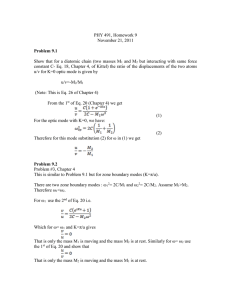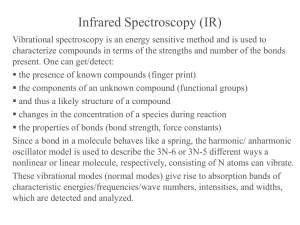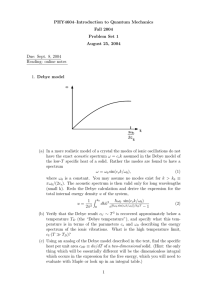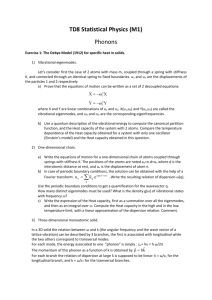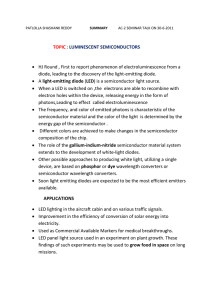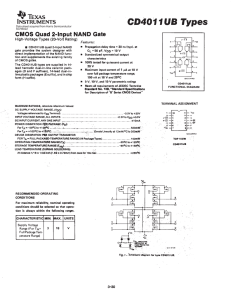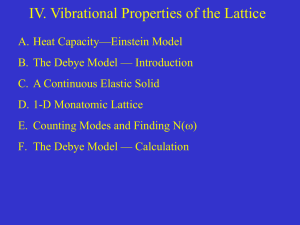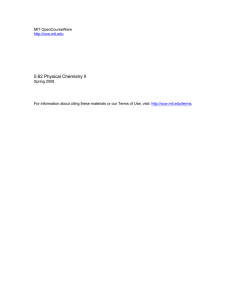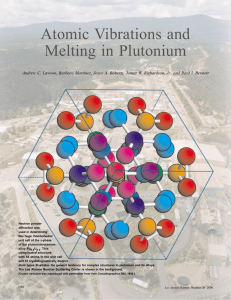NAME_________________________ r k
advertisement
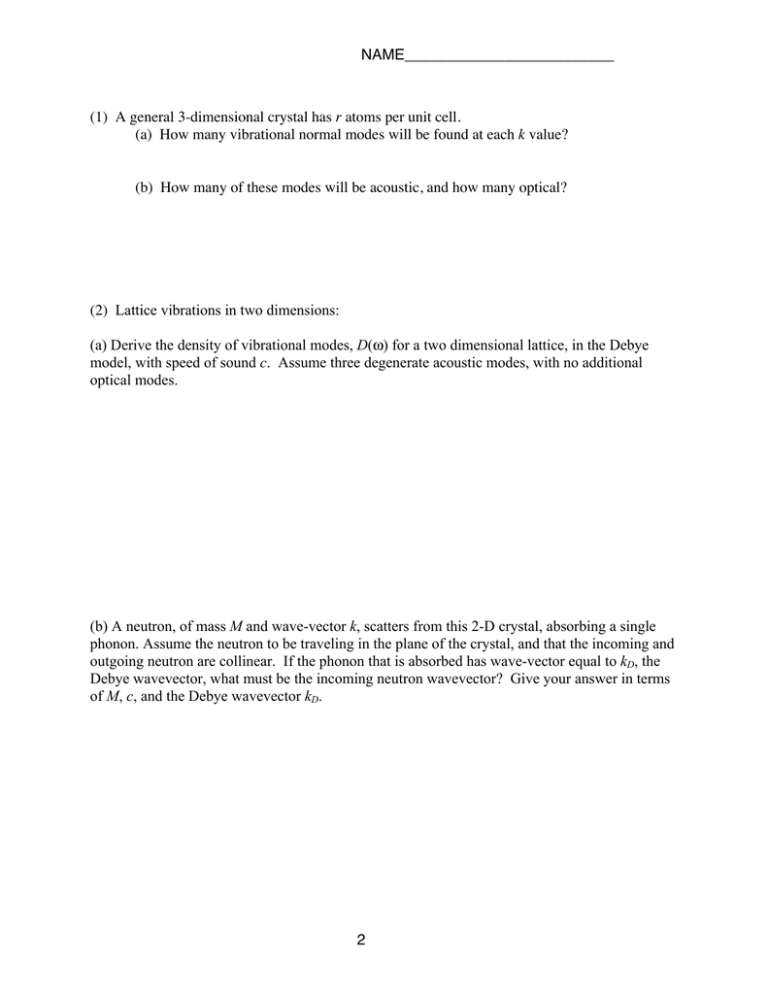
NAME_________________________ (1) A general 3-dimensional crystal has r atoms per unit cell. (a) How many vibrational normal modes will be found at each k value? (b) How many of these modes will be acoustic, and how many optical? (2) Lattice vibrations in two dimensions: (a) Derive the density of vibrational modes, D(ω) for a two dimensional lattice, in the Debye model, with speed of sound c. Assume three degenerate acoustic modes, with no additional optical modes. (b) A neutron, of mass M and wave-vector k, scatters from this 2-D crystal, absorbing a single phonon. Assume the neutron to be traveling in the plane of the crystal, and that the incoming and outgoing neutron are collinear. If the phonon that is absorbed has wave-vector equal to kD, the Debye wavevector, what must be the incoming neutron wavevector? Give your answer in terms of M, c, and the Debye wavevector kD. 2 NAME_________________________ (3) A semiconductor has a conduction band with the dispersion relationship, ε(k) = -γ1 cos kxa - γ2 (cos kyb + cos kzb). γ1 and γ2 are positive constants, and a and b are the lattice constants (the materials is tetragonal). (a) Find the inverse effective mass tensor, for a general k. (b) An electron begins at a reciprocal-space position k = [π/(2a), 0, 0]. If an electric field is applied along the y direction, find the components of k as a function of time, in the semiclassical model. (c) For the situation of (b), find the semiclassical velocity as a function of time. Sketch the resulting trajectory, and find the y-direction width of this trajectory. 3 NAME_________________________ (4) A semiconductor has a band-gap of 1.0 eV, and equivalent valence- and conduction-band densities of states. At room temperature, this semiconductor has Nc = 1.0 × 1019 cm-3, and Nv = 1.0 × 1019 cm-3. (Assume that kT is exactly 1/40 eV at room temperature.) (a) In the intrinsic regime, find the room-temperature densities of electrons and holes for this semiconductor. (b) What is the room-temperature value of µ in the intrinsic regime? Will this change with temperature? (c) A density of 1.0 × 1017 cm-3 donors are added to this semiconductor at room temperature. If these donors are all ionized, what is the density of electrons and holes? (d) What is the value of µ for the case of part (c)? 4 NAME_________________________ (5) A linear crystal with basis of 1 atom/cell is as shown. Calculate the vibrational properties in the harmonic approximation, but including next-neighbor interactions, by assuming springs K joining nearest neighbors, and springs K’ joining next-nearest neighbors. (a) For longitudinal oscillating solutions, set up the equation of motion, and solve for an expression giving ω as a function of k. (b) In the limit that K = 0, how does this expression simplify, and what is the speed of sound in this case? Will the Debye approximation be a good approximation for the low-temperature behavior? Why? 5
